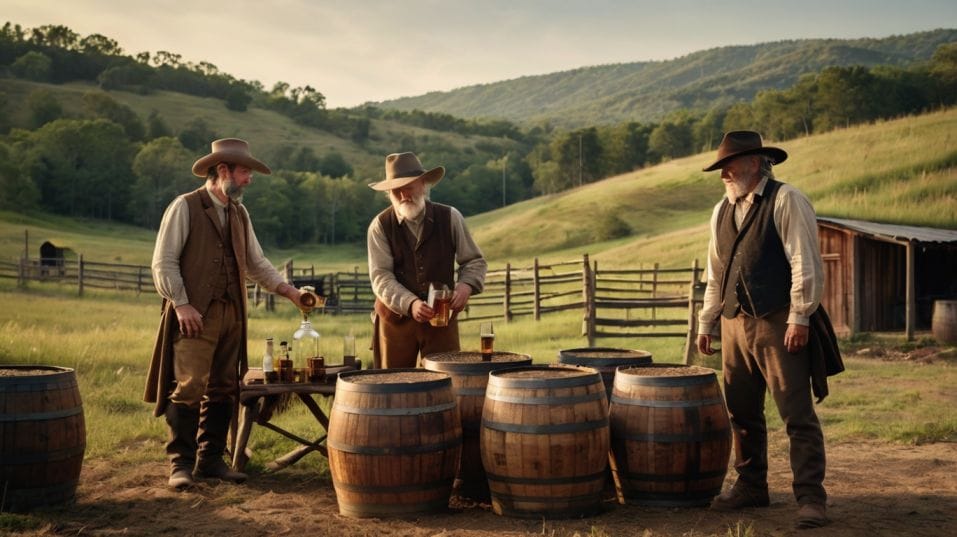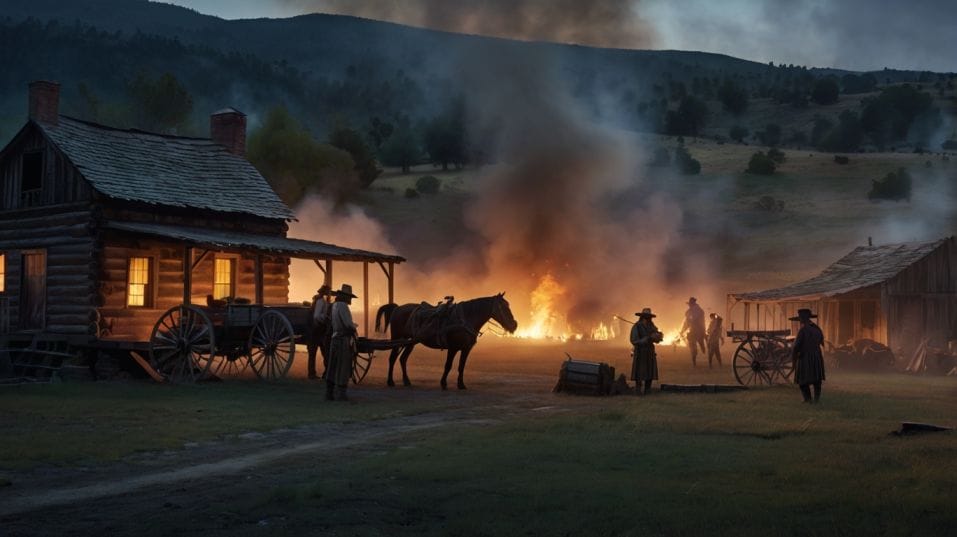What Caused the Great Whiskey Rebellion?
Discover the roots of the Great Whiskey Rebellion and how this fiery protest still shapes what you sip, collect, and taste in whiskey today.

What if your favorite whiskey was once a form of protest? Long before collectors and tasting rooms, whiskey was survival—fuel, trade, and resistance.
The Great Whiskey Rebellion wasn’t just about taxes. It was a battle over who got to make, own, and define whiskey.
If you’re just getting into whiskey, this moment matters. It’s the reason your pour today still carries grit, fire, and a fiercely independent spirit.
The Frontier’s Currency: Whiskey as a Way of Life
In the late 1700s, money was tight, especially on the western edge of the new United States. Out there, whiskey wasn’t a luxury—it was liquid currency.
Farmers in Pennsylvania, Kentucky, and beyond turned their grain into whiskey not because they wanted a drink, but because it was the only practical way to store value.
A harvest of rye or corn might rot in weeks. Distill it into whiskey, and it could last for years, be traded easily, and transported without losing quality.
You couldn’t rely on banks or stable paper money. But you could rely on whiskey. You could pay your debts with it. Trade it for goods. Even use it to settle taxes—at least, until that changed.

Enter the Federal Whiskey Tax
In 1791, Treasury Secretary Alexander Hamilton pushed through the country’s first domestic excise tax. His plan? Raise revenue to pay off the nation’s war debt by taxing distilled spirits—especially whiskey, which was booming on the frontier.
To the new government, this was logical. To the distillers, it was a slap in the face. The law favored large producers who could afford to pay a flat annual fee.
Small, local distillers—many of them Scotch-Irish immigrants who had fled similar policies in Europe—were forced to pay by the gallon, a much steeper rate.
It wasn’t just taxation. It was taxation with structure designed to break the small guys and support the rise of industrial operations. If you were making a barrel or two for trade, suddenly you were treated like a criminal.
Sound familiar? It should. Even today, there’s a tension between handcrafted production and mass distribution. The roots of that divide go back to this exact moment.
Tasting the Rebellion: What Whiskey Meant Back Then
Modern whiskey fans talk about terroir, transparency, grain sourcing, mash bills. Back then, all that wasn’t a luxury—it was necessity.
Each farm’s whiskey tasted wildly different based on what they grew, how they smoked it, what yeast strains floated through the barn.
There were no legal definitions of bourbon. No regulated aging minimums. No charred oak barrels as a requirement. Just flavor, function, and fierce independence.
To people making this whiskey, it wasn’t just a drink. It was identity. A link to culture, tradition, and family craft. When the government tried to tax it, it wasn’t just seen as greedy—it was seen as erasing a way of life.
That’s a key insight when you’re learning to taste whiskey today. Great whiskey isn’t just “smooth” or “strong.” It tells a story. Sometimes one with dirt under its fingernails and smoke in its lungs.
Resistance Brews: From Protest to Rebellion
At first, the resistance was quiet. Distillers simply didn’t register. They didn’t pay. But when federal agents started coming to collect—armed with subpoenas, backed by soldiers—the mood shifted fast.
In western Pennsylvania, federal officials were assaulted, tarred, feathered. Tax collectors were threatened, shot at, or run out of town. By 1794, tensions peaked.
A federal marshal was attacked. Then the home of General John Neville, a tax inspector, was burned down by an armed mob of nearly 600. This wasn’t scattered protest. This was open rebellion.
Washington himself saw the danger. The young republic could either crush insurrection—or risk collapse.
He became the only sitting U.S. president to lead troops in the field, marching nearly 13,000 soldiers into western Pennsylvania to suppress the rebellion.
The show of force worked. The rebels dispersed. The resistance crumbled—publicly, at least.
The Aftermath: Quiet Distilling, Loud Legacy
Most of the rebellion’s leaders were pardoned or fled. The whiskey tax technically stayed in place but was almost impossible to enforce. It was repealed in 1802 by Thomas Jefferson, a staunch opponent of centralized financial power.
But the deeper damage had already been done. Many small distillers packed up and moved south and west—into Kentucky and Tennessee—places harder to reach, harder to tax, and rich in limestone-filtered water and corn.
That migration laid the groundwork for what would become America’s true whiskey heartland. Bourbon. Tennessee whiskey.
A style of spirit rooted in rebellion, shaped by survival, and built on distilling know-how passed down under pressure.
Today, when you sip something small-batch or single barrel, when you pay attention to a mash bill or choose a rye that kicks a little harder—it’s worth remembering who first refused to let their whiskey be flattened, taxed, and standardized into submission.
How It Shapes What You Drink Now
Every serious whiskey drinker has a moment where they move from chasing brands to chasing stories. This is one of the stories worth knowing.
The Great Whiskey Rebellion was a fight over flavor, freedom, and fairness. It exposed what happens when regulators try to impose structure on something as wild and personal as distilling.
And it reminds you that whiskey has always been more than alcohol. It’s expression. Craft. Territory. Even protest.
Learning to enjoy whiskey today means developing your palate, sure—but it also means knowing what you’re tasting.
When you understand the rebellion, you understand why whiskey still feels personal. Why it still carries tension. Why it refuses to be one thing, in one bottle, for one kind of person.
The next time you taste a rustic rye or a bold, unfiltered bourbon, don’t just ask if it’s smooth. Ask what it’s saying.
Final Thoughts
The Great Whiskey Rebellion wasn’t just about a tax—it was about who controls taste. And that question still echoes every time you buy, collect, or share a bottle.
So push past the polished branding. Trust your senses. Read labels like history books. Taste with curiosity, not just loyalty.
Pour something today that makes you think. Something made with guts. Something that wouldn't exist if people hadn’t once stood up and said, this is ours.
Because if you’re going to explore whiskey, you might as well start by tasting freedom.




